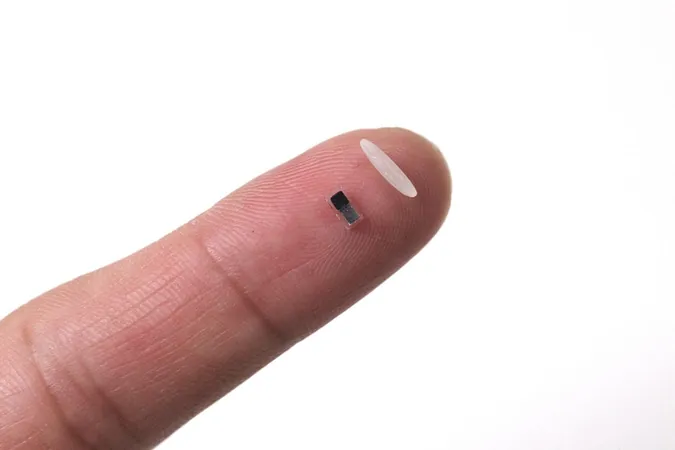
Revolutionizing Heart Care: The World’s Smallest Pacemaker is Here!
2025-04-03
Author: Yu
Introduction
In a groundbreaking development announced on April 2, scientists have created the smallest pacemaker ever conceived—smaller than a grain of rice! This tiny, innovative device acts as a temporary heartbeat regulator and can be injected into the body, where it is controlled by light before safely dissolving.
Although human trials are still a few years away, this wireless pacemaker has been celebrated as a "transformative breakthrough" that could revolutionize not just heart care but various fields of medicine as well.
Current Pacemaker Limitations
Currently, millions of people rely on permanent pacemakers, which emit electrical pulses to ensure normal heart rhythms. However, the need for temporary pacemakers is particularly crucial for the 1% of newborns who face congenital heart defects and require a temporary rhythm regulator following surgery. Adult patients recovering from heart surgeries would also benefit greatly from this innovative solution.
Existing temporary pacemakers involve invasive procedures that attach electrodes to heart muscles, connected to a powered device on the chest, which can lead to complications. The tragic case of Neil Armstrong, who suffered fatal internal bleeding following the removal of his temporary pacemaker in 2012, highlights the risks associated with current methods.
The New Pacemaker Design
The newly developed pacemaker, measuring just one millimeter thick and 3.5 millimeters long, can fit into the tip of a syringe! Its wireless design eliminates the need for invasive surgery, and when it’s no longer needed, it naturally dissolves in the body, sparing patients further complications.
How It Works
According to a study published in the journal *Nature*, the pacemaker works in conjunction with a soft patch worn on the patient’s chest. This patch detects irregular heartbeats and sends a light signal to the pacemaker, instructing it to deliver the necessary electrical stimulation. This innovative device is powered by a galvanic cell, harnessing the body’s fluids to convert chemical energy into the electrical pulses crucial for heart function.
Testing and Future Prospects
Testing on various animal models, including mice, rats, pigs, dogs, and human heart tissue in laboratory settings, has shown promising results. John Rogers, the senior author of the study from Northwestern University, expressed optimism about potential human trials within the next two to three years. His team has even launched a startup dedicated to bringing this technology into clinical practice.
Broader Implications
Moreover, the implications of this technology extend beyond cardiology. Mr. Bozhi Tian, from the University of Chicago, who specializes in light-activated pacemakers, characterized this breakthrough as a "significant leap forward." He noted its potential to transform not just heart care but also fields like nerve regeneration, wound healing, and the development of integrated smart implants.
Conclusion
As heart disease remains the leading cause of death globally, according to the World Health Organization, advancements like these bring hope for a safer and more effective future in personalized medicine and patient care. The world is watching closely as this tiny pacemaker paves the way for a healthier tomorrow!

 Brasil (PT)
Brasil (PT)
 Canada (EN)
Canada (EN)
 Chile (ES)
Chile (ES)
 Česko (CS)
Česko (CS)
 대한민국 (KO)
대한민국 (KO)
 España (ES)
España (ES)
 France (FR)
France (FR)
 Hong Kong (EN)
Hong Kong (EN)
 Italia (IT)
Italia (IT)
 日本 (JA)
日本 (JA)
 Magyarország (HU)
Magyarország (HU)
 Norge (NO)
Norge (NO)
 Polska (PL)
Polska (PL)
 Schweiz (DE)
Schweiz (DE)
 Singapore (EN)
Singapore (EN)
 Sverige (SV)
Sverige (SV)
 Suomi (FI)
Suomi (FI)
 Türkiye (TR)
Türkiye (TR)
 الإمارات العربية المتحدة (AR)
الإمارات العربية المتحدة (AR)